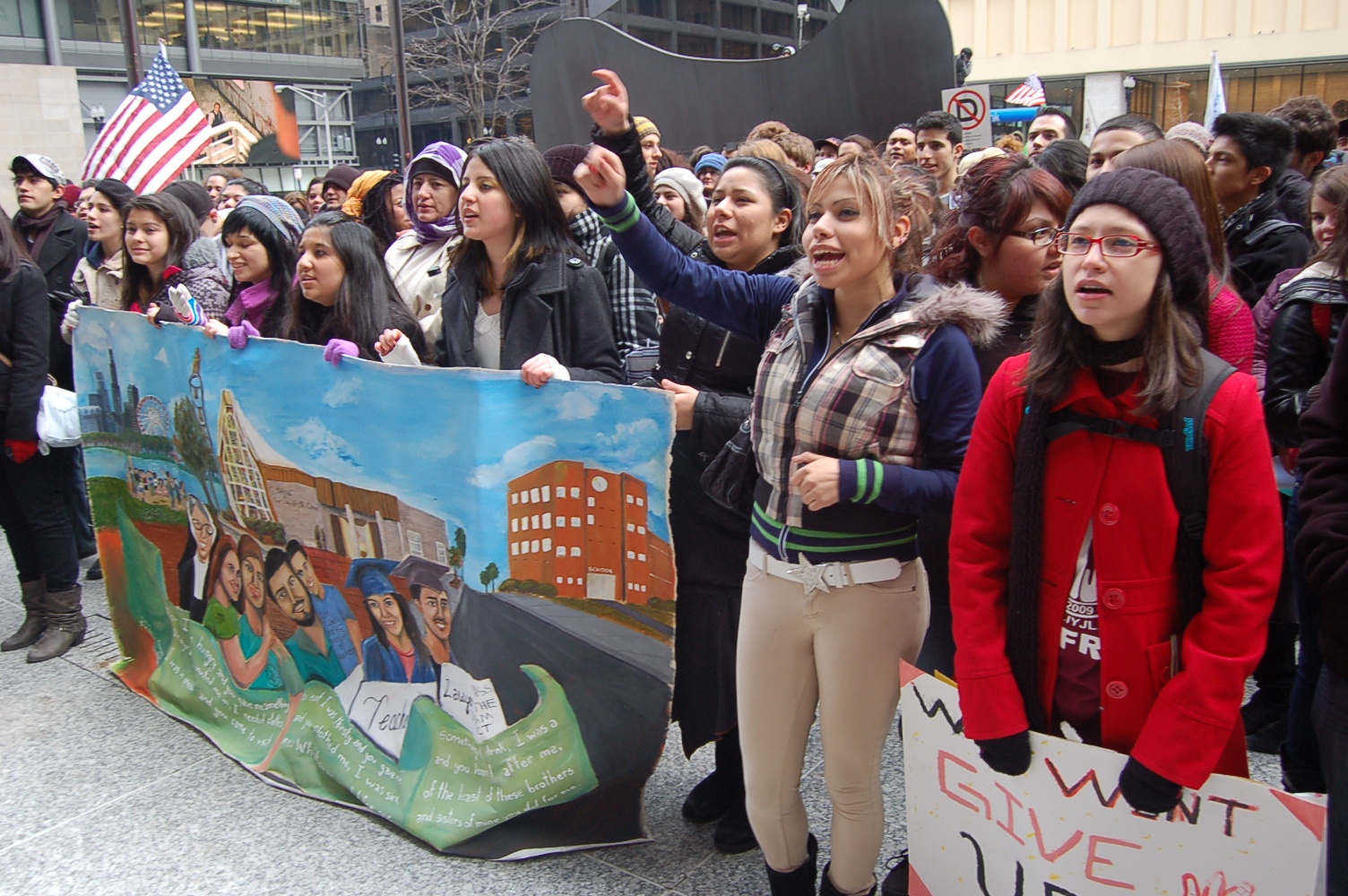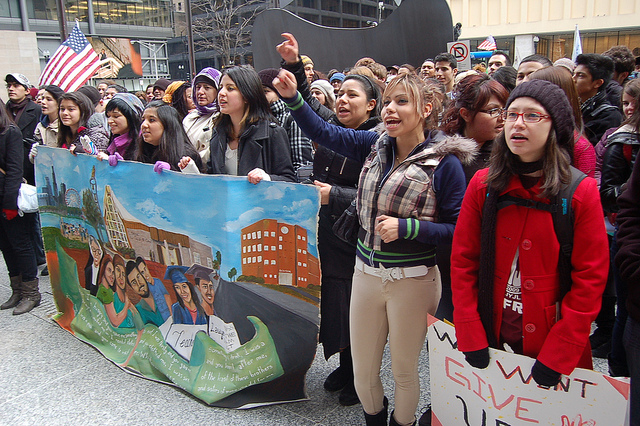
An Immigrant Youth Justice League rally in 2011. Photo via Flickr user peoplesworld.
Having immigrated to the U.S. from the Philippines at four years old, I know firsthand the difficult decision my parents made to leave behind the country they called home in search of opportunity for my family. Although I have family abroad, this country is the only place I know as home.
Recipients of Deferred Action for Childhood Arrivals (DACA) were brought to the U.S. as young children by parents who made the courageous decision to leave the only home they knew, often due to danger, conflict, poverty, or a lack of opportunity. While my immigration story is different, I can’t help but feel connected to the 800,000 DACA recipients whose only chance of hope and a future in this country was abruptly taken away from them this week.
In the wake of DACA repeal, I sought advice from Mayura Iyer, a Teach For America corps member teaching in Dallas, TX. Mayura’s main priority is to control the one thing she can in this moment – to make her immigrant students feel as safe and welcome as possible in her classroom. Every educator has this opportunity and responsibility, and below are some resources and suggestions Mayura offered to continue supporting immigrant students in her classroom:
Make sure students and their parents know their rights. Provide students with materials they can share with parents, particularly in-language translated materials, such as those from Remezcla and Here to Stay. Have these materials readily available in the classroom to allow the students to pick up on their own time – if and when they’re ready.
In addition, it’s important to clarify any misconceptions and myths that students hear on a daily basis. For instance, many undocumented families may fear that immigration authorities are present in schools and that undocumented students may be vulnerable to deportation at school. Clarify your school or district’s policy to protect immigrant students (see, for example, the National Education Association’s “Safe Zones” resolutions policies or Virginia’s guidance regarding school division responsibilities and actions in reference to students and immigration) and ensure students and parents know that school is a safe environment for them.
Uplift and value the experiences of immigrants and students of color. Celeste Hayes’ “How to Decolonize a Classroom” addresses the whitewashing of narratives about people of color in history. Teachers can actively uplift the stories and voices of immigrants and people of color by being intentional about the historical figures they post on their classroom walls or the projects they assign to their students.
Incorporate cultural competency in lessons. Teach Tolerance offers a number of instructional resources on diversity, identity, and social justice that teachers can use to help facilitate difficult conversations on topics such as race, immigration, and inclusion. No matter how difficult, these discussions are vital to creating a welcoming environment for all students, particularly during these uncertain times. While conversations about immigration and inclusion may seem most relevant to classrooms with large immigrant populations or students of color, it is equally if not more important to make sure these conversations take place in schools with small minority populations. Students take these discussions outside of the classroom and to their homes, and if we’re trying to make our country a more immigrant-friendly place, then teachers must make a conscious effort to create such environments in their classrooms.
DACA recipients are among our students, teachers, friends, and neighbors, all of whom are inextricably woven into the fabric of America. Repealing this executive order, with no guarantee from Congress that timely legislation will pass before it expires, is irresponsible and inhumane. In the meantime, educators play an important role in ensuring that immigrant students feel like they belong in the classroom — and in this country.
